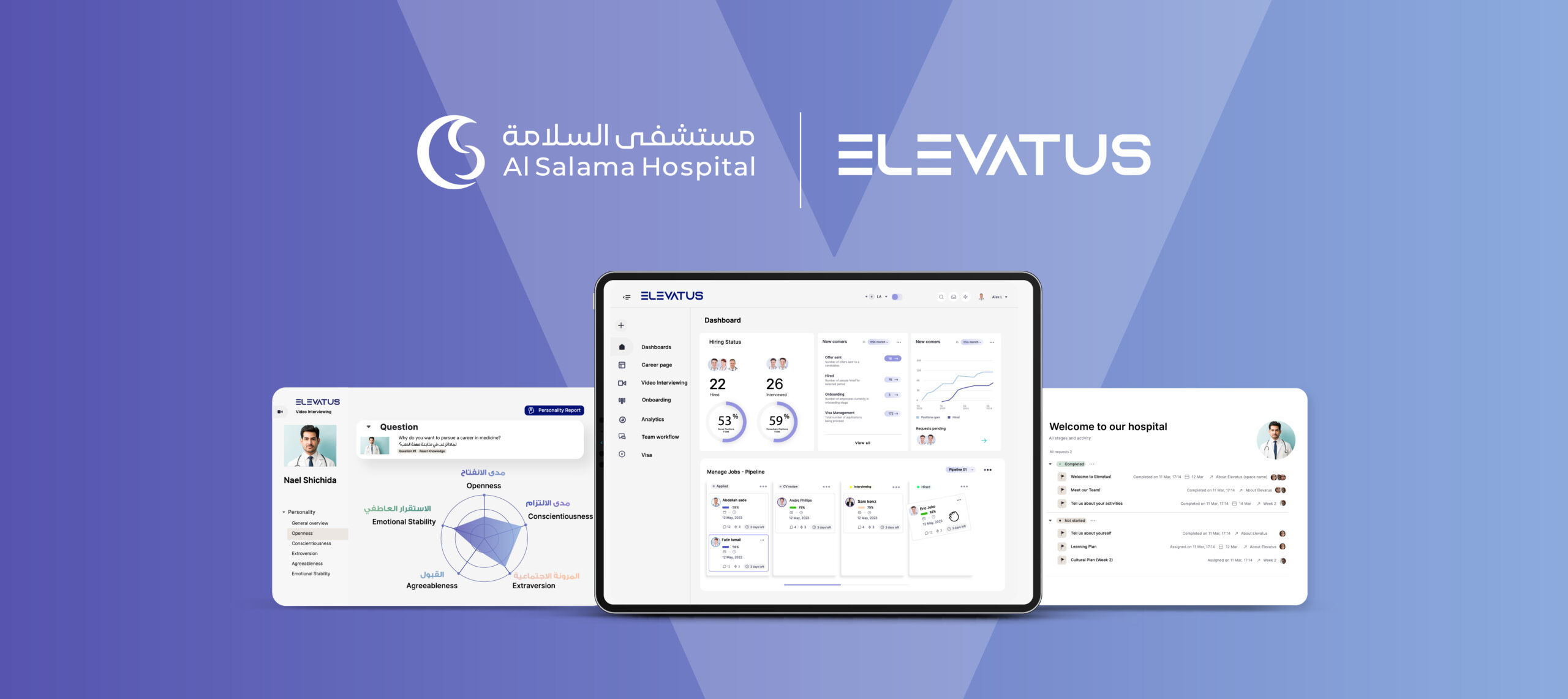
Rehiring
Considering a Comeback? Remember the Pros and Cons of Rehiring Your Former Employees
October 30, 2023
Reem Al-Tamimi
Content Writer
Ever thought of welcoming a familiar face back to the team? If your instant answer is no, maybe it’s time for a fresh perspective. Welcoming back a former employee isn’t just about familiarity. It’s about tapping into a unique mix of proven rapport and freshly acquired expertise. After all, the reduced onboarding time and the chance to benefit from their enhanced skill set can be enticing.
However, like all decisions, there are two sides to the coin. Are they returning with the same motivation? Will their reentry disrupt the team’s current dynamics? These questions and more deserve thoughtful consideration.
In this blog, we dissect both the promising rewards and the possible risks of opening the door to a familiar face. In the world of talent management, understanding these facets can be the difference between a winning move and a missed opportunity.
Build a candidate experience that comes first
See how our award-winning ATS can help you deepen your talent pool and fill positions faster by building an immersive and modern candidate experience.
Request a demoTable of Contents
Unpacking the Concept of Rehiring


Rehiring, simply put, is bringing back a former employee to the team. People leave jobs for a variety of reasons: seeking new opportunities, retiring, or sometimes due to company decisions. Yet, the door for their return remains open.
Rehiring makes good business sense. For one, finding and training new talent is a time-consuming and often expensive process. So when you rehire, you’re bringing on someone already familiar with the company’s ins and outs. Which ultimately reduces onboarding time and gets things up to speed quickly.
More and more companies nowadays are recognizing the advantages of rehiring. It’s efficient and often leads to higher productivity right off the bat. But it’s also essential to approach it wisely. Understanding why an employee left in the first place and ensuring a smooth transition back are crucial steps.
In essence, rehiring is not just about filling a vacancy. It’s about recognizing past value and leveraging it for future growth. It’s an opportunity to revisit, recalibrate, and reignite potential in the workplace.
The Advantages of Welcoming Back Former Employees
Rehiring a former team member can be a smart move. They often understand the company culture and require less training. However, it’s crucial to consider both the benefits and potential challenges. Let’s dive into the benefits of rehiring former employees and points of caution.
Familiarity with Company Culture
Rehiring isn’t just about filling a seat. It’s about capitalizing on a known asset. A former employee doesn’t need a roadmap to navigate the company’s culture. They get it. The values, the vibe, the way things are done – it’s already second nature to them.
Why does this matter? New team members need time to catch the rhythm. But a returning employee? They’re already in tune. They know the team, the traditions, and the tempo. It’s less about adjustment and more about action.
They remember who excels in what and how best to collaborate with each colleague. This isn’t about memory; it’s about muscle. Muscle memory. They’ve done it before, and they can do it again, smoothly and efficiently.
In short, rehiring means less time getting up to speed and more time doing what matters. It’s a bold move, and it’s smart. Familiarity isn’t just comfort; it’s a competitive edge.”
Reduced Training Time
The hiring process can be long and costly. From sifting through applications to conducting interviews, every step demands time and resources. Then there’s the onboarding – the phase where new hires learn the ropes. But what if you could fast-track this whole process? That’s where rehiring shines.
When you bring back a former team member, you’re not starting from scratch. They’re already familiar with the company’s systems, processes, and equipment. Sure, there might be some new tools or updated procedures, but for the most part, they’re stepping into a role they know inside out. This familiarity translates directly to reduced training time.
Instead of intensive weeks of training, you might find that former employees only need a day or two to refresh their memories. This not only means less expenditure on training materials and instructors but also a quicker transition to full productivity. And let’s not forget the savings on recruitment costs, as the search process becomes significantly shorter.
In essence, rehiring is the epitome of efficiency. It’s about getting skilled, knowledgeable employees back into the fold quickly, letting them pick up where they left off and watching the magic happen.


Past Performance as an Indicator
In the world of hiring, having certainty can make all the difference. And what offers more certainty than the proven performance of a former employee? When you rehire, you’re not banking on potential alone; you’re investing in a known quantity.
Former team members come with a history—a history with the company. Their achievements, work ethic, and contributions are already documented. Managers don’t need to rely on references from other firms or guess how a new hire might adapt. They have seen firsthand the caliber of work these individuals can produce and the value they bring.
Moreover, this prior knowledge allows for more precise role placements. Instead of wondering if an employee will excel in a specific position, managers can make informed decisions based on past performance. This eliminates much of the trial and error often associated with placing new hires in roles that suit their strengths and skills.
In a nutshell, the past performance of returning employees acts as a reliable compass for the future. It’s a testament to their abilities and a signpost of the value they’re poised to add. With rehiring, companies can confidently move forward, secure in the knowledge of what these seasoned professionals bring to the table.
Hire the right candidates faster
Easily collaborate with your team to evaluate candidates, gather feedback, and decide who’s the best fit, with our award-winning recruiting software.
Request a demoEnhanced Loyalty
Loyalty is a currency that’s hard-earned in the corporate world. When a former employee chooses to return, it speaks volumes about their commitment and attachment to the organization. This isn’t just about rejoining a workforce; it’s a testament to the mutual respect and trust that exists between the individual and the company.
Rehired employees often return with a deepened sense of loyalty. Their decision to come back is typically rooted in positive past experiences and a genuine belief in the company’s mission and values. This renewed bond can lead to greater dedication, a stronger work ethic, and an elevated sense of responsibility.
From the company’s perspective, rehiring a former employee underscores its willingness to recognize talent and open its doors to those who have proven their worth. It’s a message that resonates throughout the organization, fostering an environment where loyalty is both valued and rewarded.
Additionally, loyal employees are more likely to go the extra mile, advocate for the company, and contribute to a positive workplace culture. Their commitment can also inspire peers, setting a tone of dedication and camaraderie.
In summary, enhanced loyalty isn’t just a byproduct of rehiring; it’s a powerful asset. Companies and employees alike reap the benefits of these fortified relationships, driving both personal and organizational success.


Economic Benefits
In any business decision, economics plays a pivotal role. Rehiring former employees is no exception, and it presents a slew of financial advantages that can’t be ignored. The economic benefits of bringing back familiar faces to the organization are tangible and substantial.
For starters, the recruitment costs significantly decrease. The extensive process of advertising positions, screening numerous candidates, and conducting multiple interview rounds can drain resources. With rehiring, these costs are dramatically reduced as the search is narrowed, and the selection process is expedited.
Next comes training. As we’ve discussed earlier, former employees require significantly less training time. This means fewer resources are spent on training materials, programs, and manpower. They’re already attuned to the company’s procedures and systems, leading to quicker productivity and, thereby, a more immediate return on investment.
Moreover, the reduced turnover rate, often associated with rehired employees due to their demonstrated loyalty, leads to further savings. Regularly replacing staff can be expensive, not just in recruitment and training but also in lost productivity during transition periods.
In the grand scheme of things, these economic benefits contribute to a healthier bottom line. They allow companies to allocate funds more strategically, investing in areas that spur growth rather than constantly filling gaps. With rehiring, businesses aren’t just saving money; they’re making a smart financial move.
The Disadvantages of Rehiring Former Employees
While rehiring former employees offers numerous advantages, it’s essential to weigh these against potential drawbacks. Bringing back previous team members isn’t always a guaranteed success story. It’s crucial to consider the challenges and pitfalls that can arise, ensuring a balanced perspective on the rehiring process.
Possible Residual Issues
One primary concern with rehiring former employees revolves around any unresolved issues from the employee’s previous tenure. Rehiring might not just bring back talent; it might also resurrect past challenges.
Every employee, at some point, may face conflicts, disagreements, or misunderstandings with colleagues, supervisors, or the management at large. When an employee leaves and then returns, there’s a risk that these unresolved issues can resurface. Past grudges, disagreements, or even simple misunderstandings can disrupt the current workplace harmony.
Furthermore, if the reason for their initial departure was linked to any company-wide problems or concerns, those issues might once again come to the forefront. The returning employee could reignite discussions or debates that the company had moved past, unintentionally stalling progress.
Another aspect to consider is the team’s perception. If team members were previously aware of any conflicts or disagreements involving the returning individual, they might harbor reservations or concerns about the rehire. This can affect team cohesion and dynamics.
In essence, the concept of rehiring offers many benefits, but it’s crucial to be aware of and address possible residual issues. Ensuring open communication and understanding the full context of the past relationship can help in making informed rehiring decisions.


Perception and Morale
Bringing back a former employee sends waves through the workplace. When someone returns, it sparks curiosity. Team members may ask, why did they come back? Or why them over a fresh face?
This isn’t just about curiosity – it’s about feelings. If the returning member steps into a higher role or seems to enjoy perks, it might not sit well with the rest. It could look like favoritism. Those who’ve been putting in the hours and aiming for growth might feel the sting of being overlooked.
It’s clear that rehiring isn’t just a decision – it’s an action with reactions. Communication is the bridge here. Being open about the whys and hows of rehiring can help. It sets the record straight and ensures everyone is on the same page. Making sure everyone feels valued, old or current, keeps the team spirit alive and well.
Stagnation Concerns
Rehiring former employees can sometimes hit a snag called stagnation. There’s comfort in familiarity, sure, but there’s also the risk of the ‘same old, same old.’ A returning employee might slide right back into their previous ways of working, thinking, and collaborating. But is that always a good thing?
Fresh hires often bring in new ideas, diverse experiences, and different perspectives. They challenge the status quo and can infuse energy into a team. On the other hand, someone returning might be perceived as a step back into old habits or routines.
Teams evolve, and so do businesses. What worked before might not be the best fit now. If a returning employee isn’t adaptive, they might find it hard to align with the team’s current direction.
Plus, companies thrive on innovation and progress. The worry with rehiring is that it could hamper that momentum. That said, it doesn’t mean it’s a given. With the right approach, returning employees can be encouraged to bring in fresh insights from their time away.
It’s a balance. Recognizing the potential for stagnation and actively working against it ensures that rehiring remains a strength, not a setback.
The Reasons They Left Initially
Here’s a foundational point to consider: why did they leave in the first place? It’s a straightforward question, but the answer carries weight. If the reasons for an employee’s initial departure aren’t addressed or acknowledged, history might just repeat itself.
Maybe they left for a higher salary. Perhaps it was a search for a better work-life balance, or maybe they felt there wasn’t room for growth. Whatever the reason, it’s essential to understand it. If similar circumstances or issues still exist, what’s stopping them from leaving again?
Ignoring or overlooking the initial reasons can lead to a short-lived reunion. It might even give other employees a reason to question the company’s commitment to resolving concerns.
While rehiring can bring back talent and familiarity, it’s vital not to sweep past issues under the rug. Open dialogue is key. Addressing concerns and ensuring that both the company and the returning employee are on the same page sets the stage for a more successful and lasting relationship
Expectation Management
Rehiring former employees who quit comes with a unique set of expectations, both from the returning individual and the company. There’s often an unspoken belief that the rehired individual will hit the ground running or that they’ll mesh seamlessly with the team, just like in old times. But is this always the case?
On the flip side, the returning employee might anticipate sliding back into their former role or expect certain privileges based on their history with the company. They might think they’re in for the same experience, but companies change, roles evolve, and dynamics shift.


Mismatched expectations can lead to disappointment, friction, or even conflict. The returning employee might feel they’re not receiving the support or resources they anticipated. Meanwhile, the company might feel the individual isn’t living up to their potential or fitting in as smoothly as hoped.
Managing these expectations is crucial. It’s not about curbing enthusiasm or dampening excitement but about ensuring clarity. Both parties need to understand what’s expected, what has changed, and where they stand. Clear communication, setting boundaries, and recalibrating goals can help align expectations, making the rehiring process beneficial for everyone involved.
Navigating the Balance of Pros and Cons of Rehiring
A blend of pros and cons accompanies the decision to rehire former employees. On the positive side, companies benefit from familiarity with the company culture, reduced training times, a known track record, heightened loyalty, and clear economic advantages.
However, the flip side presents challenges like lingering residual issues, perceptions that could affect team morale, concerns of stagnation, unresolved reasons for their initial departure, and managing heightened expectations.
As with many business decisions, it’s about balance and foresight. For a prosperous rehiring experience, companies should meticulously weigh these factors, ensuring their choice aligns with both immediate needs and long-term growth objectives.
Looking to assess rehires remotely and in a fraction of the time?
EVA-SSESS is a next-generation video interviewing software that helps companies identify, hire, and develop top talent fast. EVA-SSESS offers richer insights into the assessment process through AI technology, reliable video-based assessments, and scientifically validated psychometric reports. Enterprises rely on EVA-SSESS to build customizable assessments, detect ideal keywords, rank applicants, filter out correct answers, and effortlessly assess the skills that are tough to measure. Request a free demo today!
Turn top talent to employees fast
Hire, assess, onboard and manage top talent for every job. See how Elevatus streamlines everything; from acquire to new hire.
Request a demoAuthor
Reem Al-Tamimi
Don't miss a thing!
Stay one step ahead. Subscribe and get the latest updates, news, and insights from Elevatus straight to your inbox.



